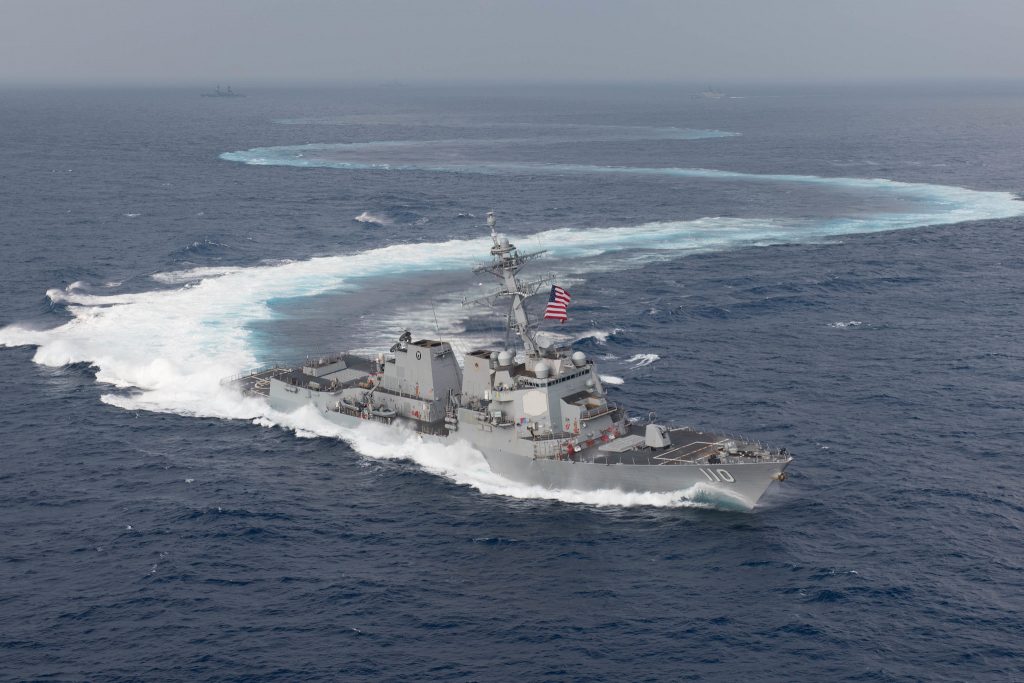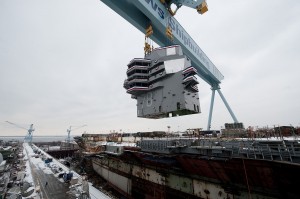Navy Unveils 355 Ship Fleet Plan — But It’ll All Change
Posted on

The Navy plans to increase the lifespan of its destroyer fleet.
WASHINGTON: In a major departure from previous shipbuilding assessments, the Navy unveiled detailed plans to get to a 355-ship fleet two decades more quickly on Thursday. It also outlined a rough estimate of the $40 billion a year it will cost to maintain that fleet, just five days before the service’s posture hearings begin in the House and six days before the shipbuilding plan is debated in the Senate.
But this plan is clearly a stopgap measure until the Navy comes out with the real plan later this year, which CNO Adm. John Richardson has promised by the end of this year.
In its new 30-year shipbuilding plan, the Navy says it will kick off procurement of 55 new ships by 2024, while reaching 314 ships by fiscal 2024 and 355 ships in 2034.
The ambitious plan faces plenty of obstacles, not the least of which is a tight schedule to begin putting its $128 billion Columbia-class nuclear submarines into the water by 2031, fixing ongoing issues with its next-generation Ford-class aircraft carriers, integrating unmanned vessels into the fleet and introducing new classes of frigates and cruisers in the coming years
In a clear signal to Congress, the Navy’s top admiral warned last month that the shipbuilding plan is very much a work in progress. Richardson revealed he is rethinking the 355-ship concept from top to bottom, and promised a new plan by the end of the year that would likely yield a new number of ships.
“We want to make sure that we are moving forward in a very deliberate way,” he said in February, “so that we’re not counting on something that hasn’t been relatively proven. We also want to make sure we’re moving fast so that we don’t get disrupted or beaten.”
The new study also revealed a rough estimate for how much a 355-ship fleet will cost to sustain. Initial, incomplete estimates put the cost at least $40 billion a year.
But that $40 billion, unsurprisingly, will surely change. The Navy admits that in arriving at that number, it left a lot on the table. “Equally important additional costs, but not yet included in the future estimate,” include operations accounts, modernization and ordnance, which are “threat and technology driven,” as well as infrastructure and training, aviation detachments, networks and cyber support, and other factors it does not name.
Protecting the Industrial Base
Underlying all of this proposed work is the shipbuilding and ship repair industrial base.
The report laments that over the past six decades, over a dozen defense-related new construction shipyards have closed, while another three left the defense industry, while only one new shipyard has opened. “We are at a level of fragility that, without consistent and continuous commitment to steady acquisition profiles as proposed in this plan the industrial base will continue to struggle and some elements may not recover from another ‘boom/bust;’ cycle,” the report notes.

The USS Ford under construction at Newport News shipyard.
In order to help alleviate some of those constraints, the Pentagon plans to spend millions over the coming year shoring up the shipbuilding industrial base, though it has yet to detail its final plans for where that money will go.
The service also revealed Thursday that with the release of the fiscal 2021 budget it will roll out what it’s calling Private Shipyard Optimization (PSO) initiative “for optimal placement of facilities and major equipment in each region. This includes an investment plan for infrastructure needed to support availability maintenance in support of a 355-ship Navy.”
The Navy is working though plenty of issues, including extending the life spans of its DDG-51 Arleigh Burke-class destroyers in order to bump up the number of hulls it has without building new ships. In the fiscal 2020 budget, released last week, the service requested money to fund two new Ford-class carriers, while forgoing the mid-life refueling of the USS Harry S. Truman carrier. It also wants to add an extra Arleigh Burke-class destroyer and a third Virginia-class submarine in 2020.
The plan, however, drops to just two Arleigh Burkes a year in 2021 and 2022 compared to the previously planned purchase of three a year. It also pushes the buy of two amphibious San Antonio-class Flight II landing dock ships, known as LPDs, out past 2024 is part of a much wider reevaluation of naval warfare.
Subscribe to our newsletter
Promotions, new products and sales. Directly to your inbox.
